I have become a sort of antithetical tourist, visiting places at the very nadir of their low seasons. Finding places to stay and to eat can be a major challenge. I am so often the only guest in the hotel or the only diner in the restaurant that, were I paranoid, I’d strongly suspect a global conspiracy of avoidance, centred on my person. Fortunately, I like to be alone. There are great advantages, of course, to travelling out of season. Flights, car hire and hotels are cheap. Places that are open for business are grateful for the custom. And, best of all, there are no tourists. Tourists spoil everything they touch.
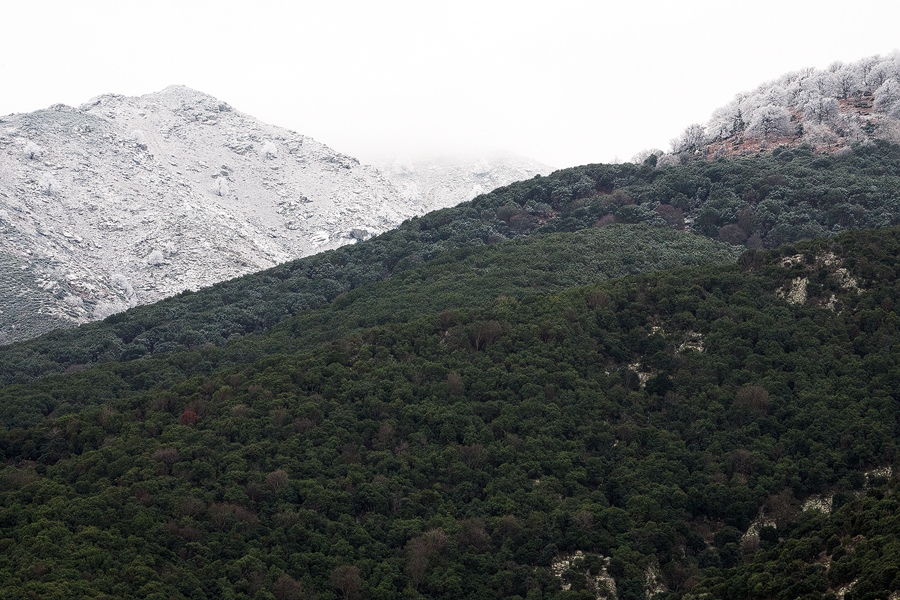
There is a dilemma at the heart of all travel writing. Real travellers yearn to visit places that few others can be bothered to get to. Or at least to see familiar places through eyes unblinkered by the guidebook’s official list of Things You Must Do. But traveller-writers want to tell people about their experiences. In their wake follow backpackers and the hostels and restaurants that serve them and, after a while, mass tourism descends. The most influential writers end up being culpable when the unspoiled places they wrote about are ‘discovered’ and ruined. As recently as the 1950s, Freya Stark could journey along the Lycian Coast of south west Turkey in a small yacht and find it untouched.
There are not so many places left where magic reigns without interruption and of all those I know, the coast of Lycia was the most magical.
Freya Stark – The Lycian Shore
The operative word here is ‘was’. There is still magic, in the Taurus Mountains behind the Lycian shore, but the coastline about which Stark wrote so lyrically has been brutalised by the construction of massive hotels, providing all-inclusive holidays to tourists from the sun-starved north. A wide, fast tarmac road runs along the coast and it is possible, if you are really determined, to drive from Adana to Marmaris in a single day.
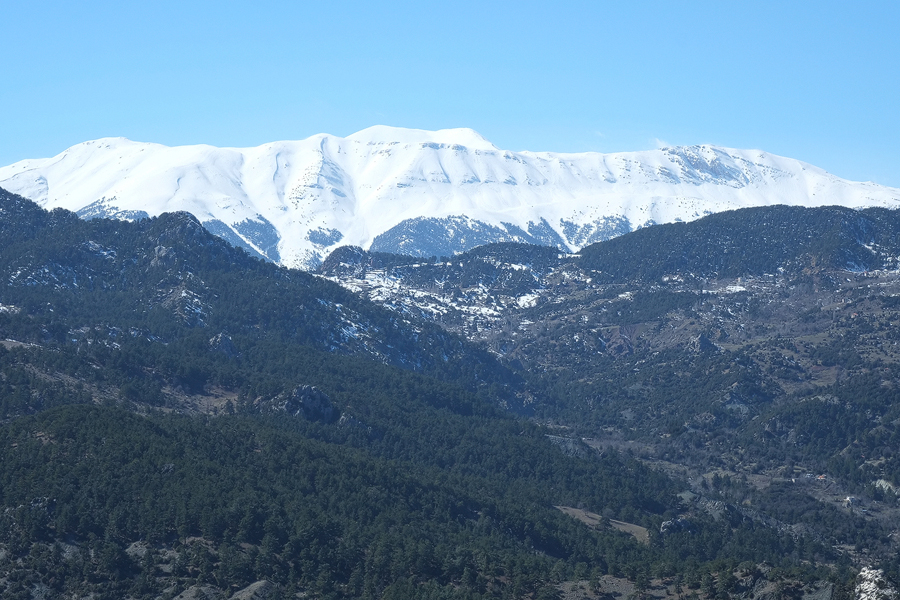
The most adventurous tourists – most never leave their hotel grounds – in Lycia go ‘canyoning’, paying to drive quad bikes along dirt tracks running up the river beds of the beautiful limestone gorges. Why? Perhaps the roar of two-stroke engines echoing off the ancient cliffs satisfies some atavistic need to show nature who’s boss?
Some people tell me privately that what I’m doing is irresponsible. To the extent that I am successful in my aim of getting more people interested in wild snowdrops I will, so this argument goes, contribute to their exploitation and eventual extinction, by encouraging irresponsible collecting. I’ve been reading John Aitchison’s wonderful natural history diary ‘The Shark and the Albatross’. Aitchison is a cameraman and he ponders eloquently a similar dilemma, as he films wild tigers in India. Do the films he makes encourage more tourism, adding another pressure to the many the tigers already face, or do they inspire a love of nature and a desire to conserve it, in the millions of viewers of his films?
Like Aitchison, I am uneasy about the answer to this question. It is desperately arrogant for an anointed few to permit themselves access to the wonders of the natural world, while denying it to everyone else. Travelling in western Turkey last year I encountered a barrier across a road, stating that only park officials and scientists were permitted beyond this point. I respected the sign and turned the car around, but resentfully. I daresay I’m as curious about what lies beyond the sign as any of the ‘scientists’ who pass with impunity.
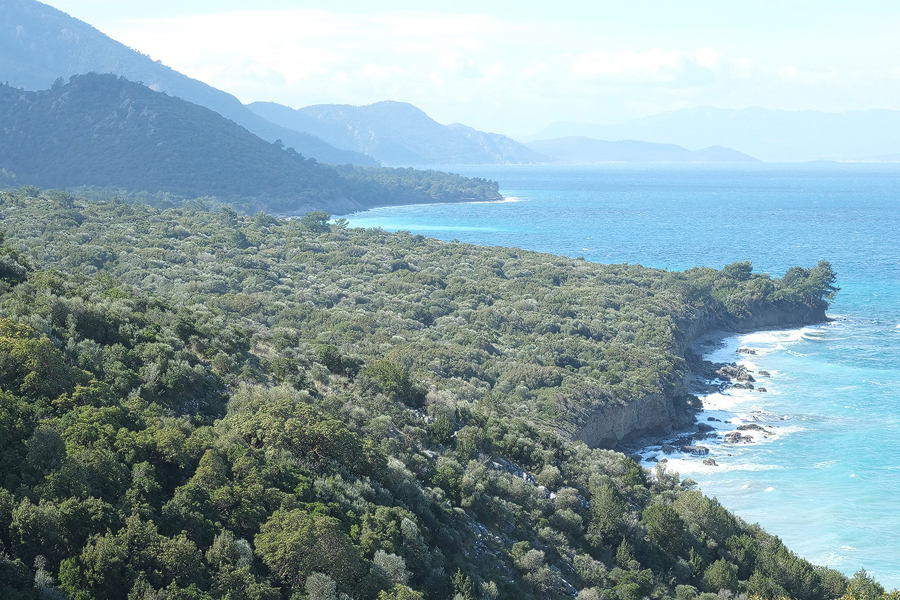
People tend to value most highly things in which they have a stake. I remember travelling around Eastern Europe, soon after the Berlin Wall fell, after communism but before capitalism. In Prague my companion and I decided to splurge on the best restaurant we could find. The trouble was, all the restaurants advertised identical menus, at identical prices. We settled for one with a jolly atmosphere and had a reasonable dinner. When we wanted to leave, we tried to attract the attention of a waiter to ask for the bill. We tried for half an hour. We stood up, put on our coats and gave every indication of impatience and a need to be elsewhere. Eventually we walked out, slowly, without paying.
None of the restaurant’s staff had any stake in its success. They would receive their small salaries whether we paid or not and they simply didn’t care. Every time I see a sign saying ‘keep to the paths’, ‘don’t pick the flowers’ or even the hackneyed old cliché ‘take only photographs, leave only footprints’, I am reminded of that restaurant in Prague. If people feel not just that they don’t have a stake in nature but that they are not among the privileged few permitted untrammelled access to it, they will rapidly lose interest in preserving it. We should be encouraging people to pick the flowers.
The economist, Elinor Ostrom, has shown that the tragedy of the commons need not inevitably play out when natural resources are owned in common, if local people have a stake in the resource. I am interested in whether it is possible to avoid the tragedy by expanding the circle of people who feel they have a stake in the survival of a species. I suspect that this is what happens with tigers and pandas and other ‘charismatic megafauna’. People who watch John Aitchison’s films feel that somehow they would be personally diminished by the extinction of the charismatic animals the films portray so, although they will probably never see these animals in the wild, they reach into their wallets and contribute to the organisations fighting for their survival.
The wild snowdrops that I love so much are threatened everywhere not by over-collecting but by habitat destruction and degradation. The more people there are who feel personally affronted by this minor tragedy, the less likely it is that snowdrops will go quietly into the everlasting night of extinction, as so many other unappreciated, unlamented plants and animals do every year.
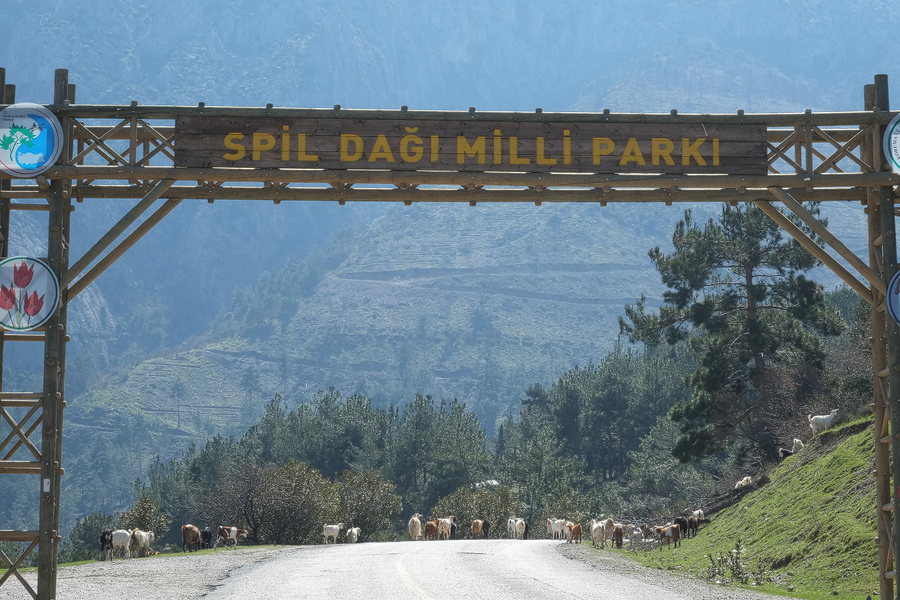
Samothraki, lying 50 kilometres off the coast of Greece, in the NE Aegean, has largely avoided the mass tourism that literally pollutes the islands of the Cyclades and Dodecanese in summer. Samothraki’s beaches are mostly pebbly and exposed to the winds and waves. There is no airport on the island and it is difficult to get to directly from Athens. Long may this last.
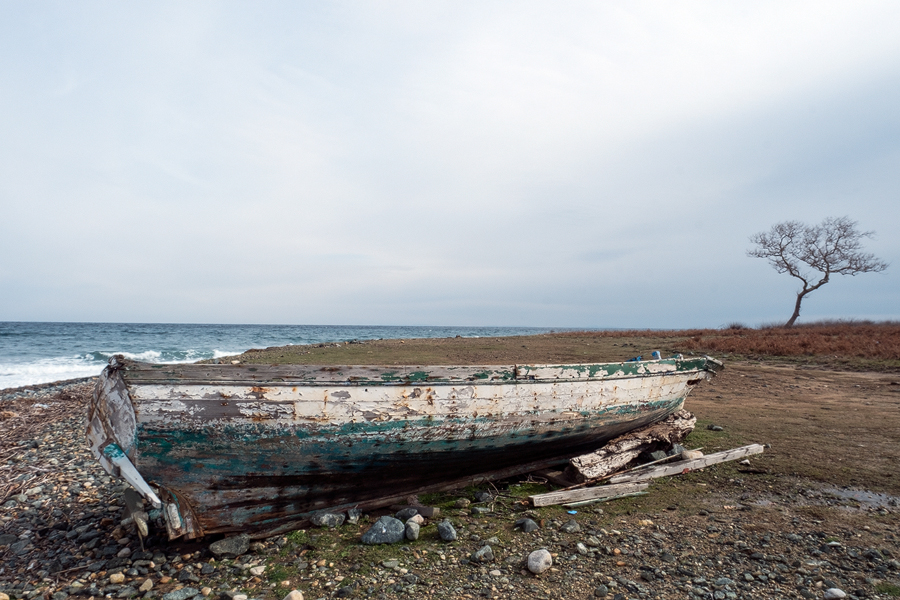
The ferry from Alexandroupolis runs once a day in winter, unless the wind is too strong. One blustery morning in January I took my little hire car across the 53 kilometres separating Samothraki and the mainland, with only a handful of other passengers and a virtually empty car deck. The wind was bitingly cold when I ventured out onto the small passenger deck to gaze at the approaching island, dark and mountainous and capped with banks of grey, snow-laden cloud.
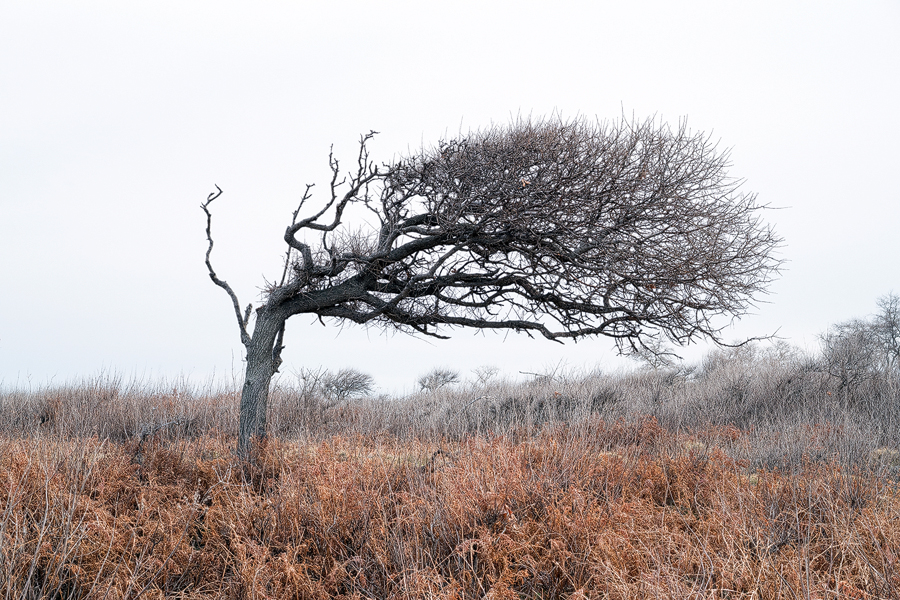
A road runs along the coast for about two-thirds of Samothraki’s circumference. The south-east quadrant of the island is virtually uninhabited and the steep mountains fall straight into the sea. The only way in is on foot and I didn’t have time on this trip for hiking. The north and the west of the island have gently sloping skirts of habitable, fertile land, spreading from the bases of the steep slopes and it is here that all the island’s habitation and cultivation is concentrated. I stayed at Therma, on the north coast.
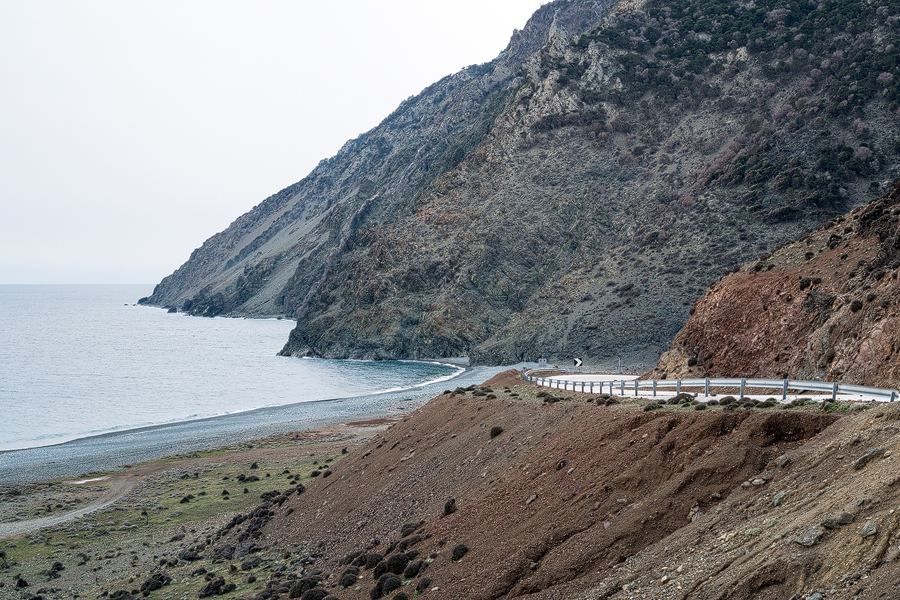
The air temperature at sea level hovered just above zero for most of my stay but the island rises to just over 1600m and there are several peaks over 1400m. Frost lay heavy on the trees from about 500m and higher still there was snow.
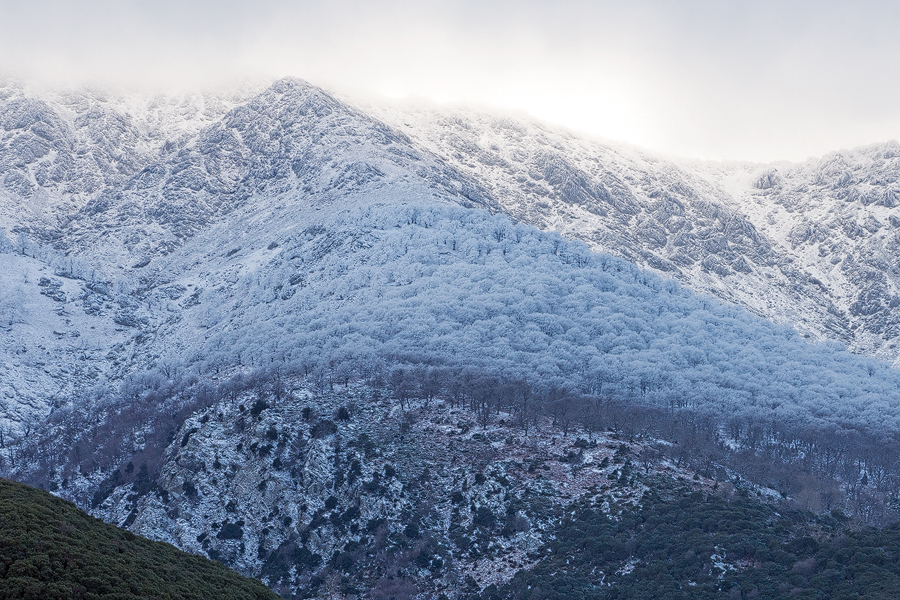
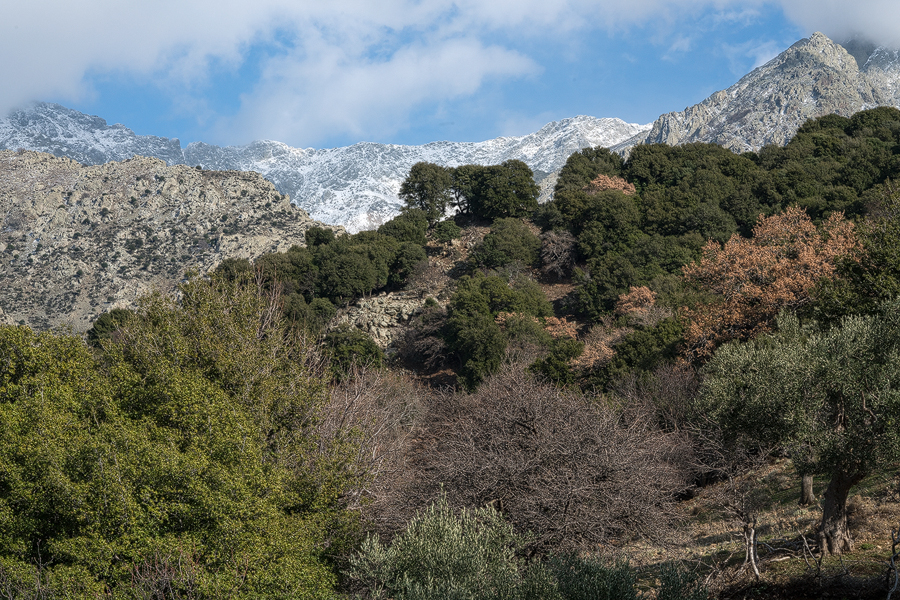
Forests of magnificent old Plane Trees covered large areas of flat, wet land near the coast and followed the many river valleys up into the hills. These rivers tumble over the hard granite and schist rocks of the island’s interior, falling steeply over a series of spectacular but largely inaccessible waterfalls. When they reach the flatter land of the coastal skirt, they become wider and gentler, meandering across wide, boulder-strewn beds, in a network of channels.
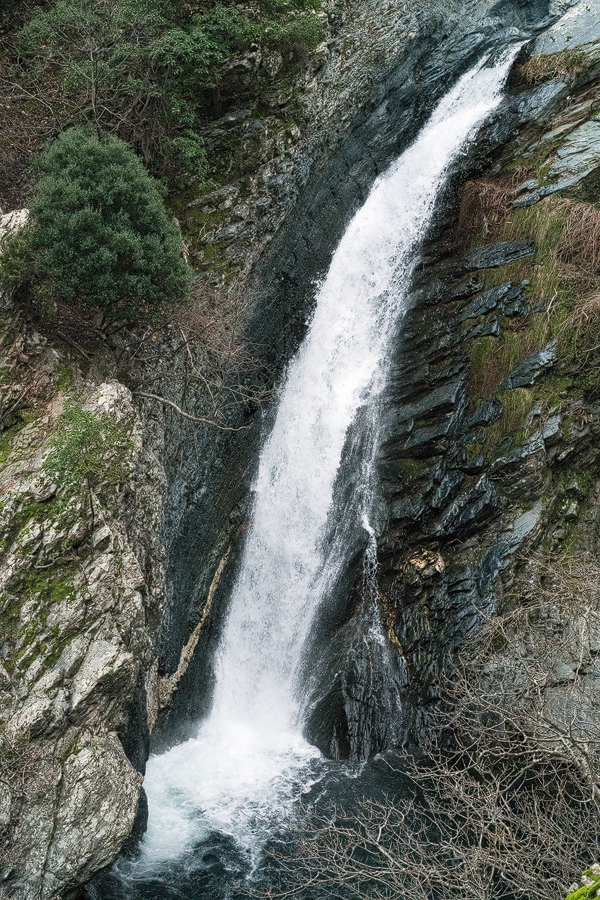
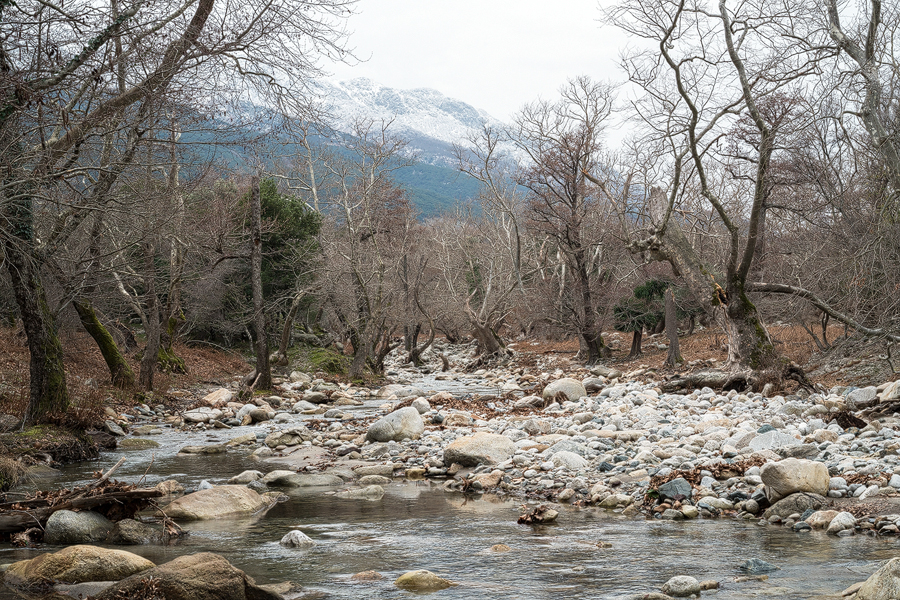
I have written in an earlier blog post about the snowdrops that occur on this island, which may or may not be a distinct species. They only came to the attention of botanists in 2006 though, of course, the residents of Samothraki must long have been aware of the large populations in their midst. I don’t see my modest attempt to bring the existence of these snowdrops to the attention of a wider audience leading to a mass tourism outbreak on Samothraki. But it would be wonderful if more galanthophiles travel there to see them.

